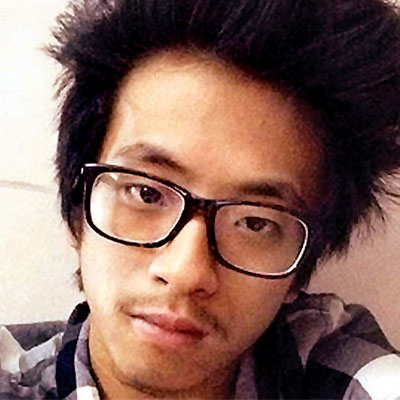Racism is caused by the misplaced belief that members of a certain race share certain common characteristics that result in that group being superior or inferior to others. For the past couple of weeks, our news sources have been screaming about it and hate crimes every day.
In India, we participated in the global social media backlash at the social media outrage against the multilingual Coke ad celebrating America’s diversity that aired during Super Bowl. We also reacted to the killing of Nido Tania, the student from Arunachal Pradesh, in a racist attack at home – in New Delhi.
We are complicit in his death, of course, and it's amusing that global racism against Indians, lumped with other non-white, non-Christian ethnicities, surprises and offends us, when we are happy doling it out ourselves. We stereotype and are wary of anyone in a different group than us, and show deference to anyone we believe is better: guards in Chennai would always salute my Punjabi father who they believed was a white foreigner. Those we perceive as lesser than us in any way – people who are of a genetically different human phenotype, but especially those darker than us, of a different religion or ‘lower’ class and caste and ethnicity than us, who speak an ‘inferior’ language and have a dissimilar culture and history, non-heteronormal, poorer than us, with eyes squinted more than ours – are discriminated against, shown their inferiority in no uncertain terms.
We are supremely conscious of our ranking on the socio-cultural hierarchy, and while we appreciate being allowed to climb it, succeeding on this comparative scale means being, and staying, higher up than scores of others.
At the beginning of our feminism classes in college, a recurring question was about why mothers-in-law would perpetrate dowry and hate crimes against their sons’ brides; having been victims of patriarchal mores themselves, shouldn’t they be more empathetic, we wondered. The answer is apparent – when allowed to participate in patriarchy on the stronger team, why would these women refuse the power? Same with racism in India.
So a bunch of shopkeepers in Lajpat Nagar beat a ‘ch*nki’ to death for reacting to racist taunts, generously aided by police stupidity. Stereotyping those from the Northeast for their Mongoloid features and Western fashions is deeply engrained in our culture. Only recently, my grandmother recounted how she and a group of friends were chased by a Chinese vendor for taunting him with ‘Cheeni-Meeni Chuha Kha’ as five/six-year-olds in undivided India. Today, my Assamese friend Prerna is propositioned and taken to be a prostitute more than most other girls.
Within the country, we discriminate against small subsets on micro levels – people from the Northeast, the tribals, Sikhs, Muslims; the Marathi manoos against others in the state. This divisiveness and internal strife begs the question: what unites a nation’s nationals, and on what basis are its borders and boundaries drawn? Marina Nido, the mother of Tania, is quoted in ‘India Today’ saying: “I'm proud to be Indian. But where should we go? Should we be sent to China?”
Since we don’t seem to acknowledge its natives as fellow Indians, would we honestly like to see Arunachal Pradesh gifted to China, which already claims it on some maps.
We exult in the achievements of NRIs, unashamedly and proudly claiming the successful ones as our own (even when the person doesn’t particularly agree – remember the excitement when Norah Jones, the daughter of apna Pandit Ravi Shankar, became famous; and our collective disappointment when she didn’t acknowledge him in her Grammy acceptance speech). Growing up, I wonder how often Satya Nadella was reminded that he fit the IT geek stereotype of an average ‘Madrasi’.
We have laws against religious and cultural intolerance and hurting others’ sentiments and are taught ‘unity is diversity’ in school, but those who divide and rule, who incite and propagate divisiveness for political, religious and social gain, are allowed to do so. And then, how far should these factions be indulged, each with demands for newer states, special rights and statuses, like Telangana?
Globally, on a macro level, the flip side of national and patriotic pride is a belief in superiority and a race towards supremacy. While it is riddled with internal racism, USA’s quest to protect the interests of its nationals has resulted in the deaths and human rights’ violations of scores of civilians in other nations. The belief that we are dramatically different from and superior to Pakistanis, and vice versa, has led to 65 years of bloodshed.
But we’re not – human beings are the same everywhere. In this past year, this is at least the third time I have written about racial discrimination and stereotyping. My agenda is not born from feeling disempowered: I have never really been discriminated against in India, socio-culturally positioned as I am; abroad, questions about my English are, I believe, not simply racism and arrogant Euro-/white-centricity but also curiosity and ignorance. It is because anyone who believes in equal rights can see the dangers of labels and the consequent discrimination.
As always, the solution is an open mind willing to acknowledge and shed conditioning in the face of knowledge, understanding, empathy and rights. The Prejudice Tracker, a soon-to-be-launched app that offers real time crowd-sourced reports on worldwide incidents of discrimination, is an interesting development for countries with high internet access.
We align ourselves, or are genetically aligned, with a subgroup, then measure ourselves and are measured against others. We aim higher, and disdain and protect our own against the feared other… At final count though, who exactly is the ‘us’ and who is the ‘them’?

